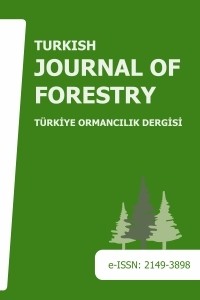Canlı toplumlarının derecelendirilmesi için nispi entropi, boolean operatörleri ve temel bileşenler analizi kardeşliği
Bilgi teorisi, Olasılık teorisi, Kullback-Leibler ayrışması, Bilgi kazancı, Bilgi ayrışması
Brotherhoods of relative entropy, boolean operators and principle component analysis for a gradient of living communities
Information theory, Probability theory, The Kullback–Leibler divergence, Information gain, Information divergence,
___
- Arpasi, J.P., 2003. A Brief intrduction of ternary logic. http://www.docslides.com/luanne-stotts/a-brief-introduction-to-ternary. Accessed: 07.09.2017
- Ben-Ari, M., 1993. Mathematical Logic for Computer Science. Third Edition, Springer London Heidelberg New York Dordrecht.
- Boc, A., Diallo A.B., Makarenkov, V., 2012. T-REX: a wep server for inferring validating and visualizing phylogenetic trees and networks. Nucleic Acids Reseach, 40: 573-579.
- Cover, T.M., Thomas, J.A., 1991. Elements of information theory. Wiley, Network., http://coltech.vnu.edu.vn/~ thainp/books/Wiley_-_2006_ Elements_of_Information_ Theory_2nd_Ed.pdf; Erişim tarihi: 14.03.2016.
- Ejrnæs, R., 2000. Can we trust gradients extracted by detrended correspondence analysis? Journal of Vegetation Science, 11(4): 565-572.
- Hill, M.O., Gauch, H.G., 1980. Detrended correspondence analysis: An improved ordination technique. Classification and ordination. Springer, Dordrecht. pp. 47-58.
- Özkan, K., 2016. Application of information theory for an entropic gradient of ecological sites. Entropy, 18(10): 340.
- Pathak, R.P., Baniya, C.B., 2017. Species diversity and tree carbon stock pattern in a community-managed tropical shorea forest in Nawalparasi, Nepal. International Journal of Ecology and Environmental Sciences, 42(5): 3-17.
- Peet, R.K., Knox, R.G., Case, J.S., Allen, R., 1988. Putting things in order: The advantages of detrended correspondence analysis. The American Naturalist, 131(6): 924-934.
- Schumacher, B., Westmoreland, M.D., 2002. Relative entropy in quantum information theory. Contemporary Mathematics, 305, 265-290.
- Vedral, V., 2002. The role of relative entropy in quantum information theory. Reviews of Modern Physics, 74(1): 197.
- Yayın Aralığı: Yılda 4 Sayı
- Yayıncı: Isparta Uygulamalı Bilimler Üniversitesi
Bazı memeli yaban hayvanlarının gösterge tür analizi; Ağlasun örneği
Halil Süel, Berna Yalçınkaya, Ahmet Mert
Tuğba Yılmaz Aydın, Murat Aydın
Avcı ölçeği ile Türkiye’de avcı profilinin analizi
Senecio trapezuntinus Boiss. (Asteraceae)’un koruma statüsünün yeniden değerlendirilmesi
Salih Terzioğlu, Kamil Coşkunçelebi
Ceviz kaplamalarının renk ve yüzey pürüzlülüğü üzerine pH etkisinin araştırılması
Ferhat ÖZDEMİR, Doğu RAMAZANOĞLU, Hamit ÖZYURT, Eda DALGIÇ, Ahmet TUTUŞ
Ceyhun Göl, Alkan Günlü, Semih Ediş, Ahmet Küçükdöngül
